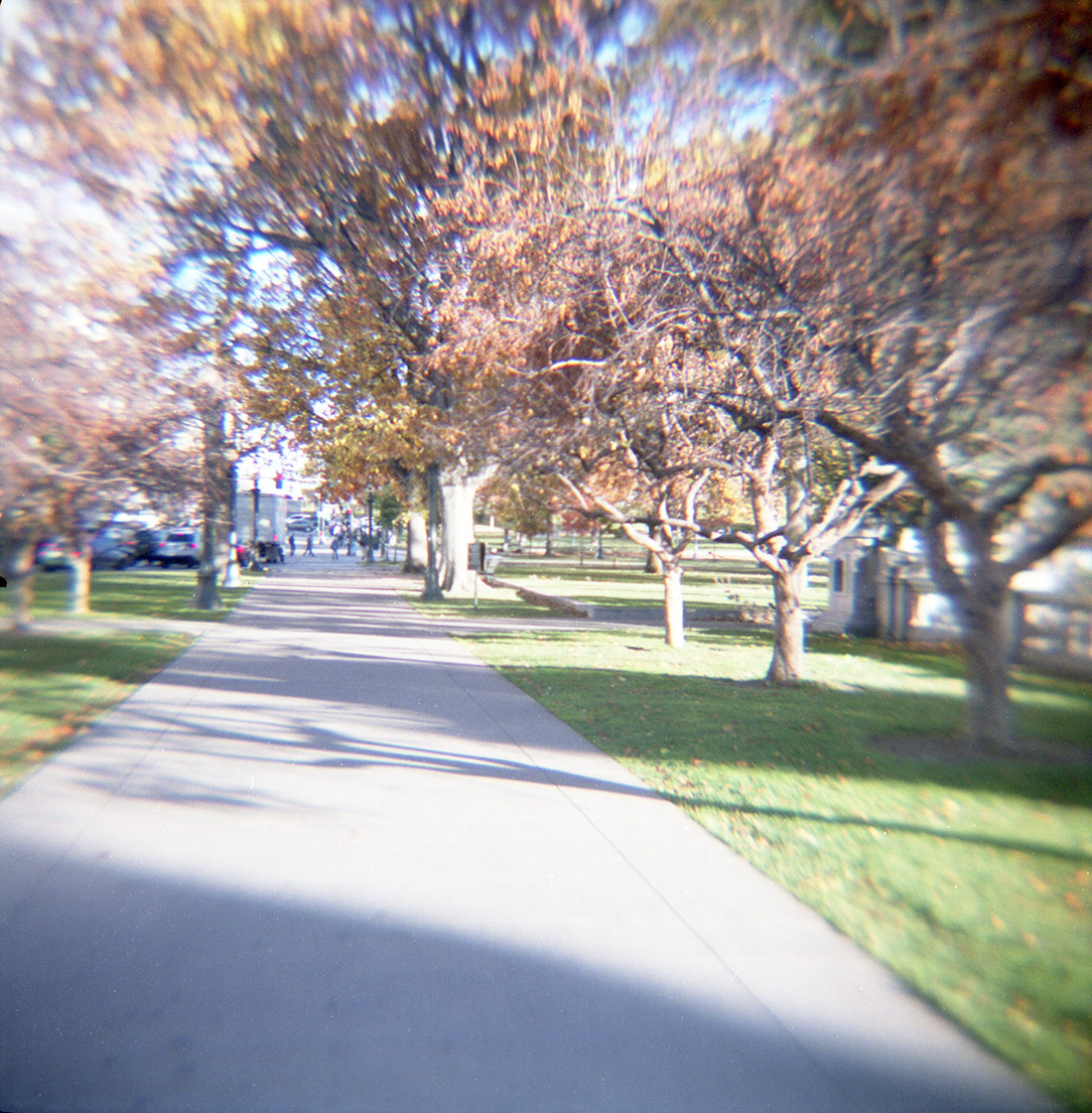
It’s not entirely clear whether the Banier camera is a Diana clone or just an actual Diana under another name, because there were so many of each.
Bought on a whim without any foreknowledge and tested more out of a sense of obligation than genuine interest, it’s been on my shelf now for years.
I’m going on the assumption that it’s an incarnation of the Diana, made in the same molds and sold somewhere that the manufacturer thought would respond better to this moniker.
I’m not even sure how to pronounce its name. Is it “ban-ee-ur,” or “ban-yer,” or “bon-ee-ay,” or “bann-eer,” or what? I’m going with “baan-yay” in my mind.
Spoiler alert: Unless you seriously want that junky, lo-fi, plastic crap camera experience, avoid these.
About it
What we know today as a “Diana” actually was just one of many names for the plastic cameras made by the Great Wall Plastic Co. in Hong Kong in the 1960s and early 1970s.

The defining visual characteristic of the Diana and its variants is the blue plastic top on the black plastic body, and the shiny silver front on the lens. The tops came in a variety of different shades of blue, which may or may not have coincided with certain names or certain clones.
The Diana and its variants were so cheaply made that probably as many were given away as free promotions, carnival prizes or even magazine subscription sales awards, as were sold in exchange for actual money. Some didn’t even have boxes, being offered in early blister packs instead.
It’s essentially a box camera, although the body is fairly thin and the lens projects quite a ways out the front. The focal length is approximately 75 millimeters, but the plastic meniscus lens is fairly small. The viewfinder is reasonably large and gives the impression of easy framing, however.

The Diana uses 120 roll film, which is 64 millimeters wide. Most 120 cameras take advantage of this by making images that are 6 centimeters (60 millimeters) in one dimension — 6×4.5, 6×6, 6×7, 6×9, 6×12, or 6×17, utilizing the maximum possible film area.
Unfortunately, the Diana’s tiny lens can’t project a large enough image circle to fill a frame that’s 6 centimeters in either dimension. So the original Dianas create 42-millimeter square images.
The ruby window in the Banier’s back cover is positioned as if it were a 6×4.5 camera, so at least you still get 16 images on a roll of film.
The shutter is a simple rotary-type that can be set to instant or bulb modes by means of a sliding switch on the lens barrel. The Banier’s control layout is slightly different from the more common Diana examples I’ve seen, with the “aperture” adjustment opposite the shutter release instead of the two sitting next to one another.
The shutter speed is listed anywhere from 1/50 second down to 1/100 second on different sites. Mine seems pretty slow, but the exposures I got indicate that 1/50 or 1/60 is likely correct.

“Aperture” is in quotation marks because it’s just a floating metal mask, painted black, with two holes drilled in it. The Banier has three apertures that correspond to icons on the lens barrel for “sunny,” “a bit cloudy,” and “really quite cloudy.” The first two are holes in a mask on the aperture lever, and the third is where the lever has moved out of the way and the lens is “wide open.”
Some sites report these apertures are, respectively, f/11, f/8 and f/4.5. Others list them as f/19, f/13 and f/11. The truth, by my measurement, is somewhere in between. I make them f/16, f/11 and f/8 — roughly.
The whole “aperture” assembly just free floats, though it has a tab on the end that looks like it should match a piece of plastic that would offer some stability. Whatever it was supposed to contact is missing, though. Also, strangely, it only masks the center portion of the diameter of the lens, allowing plenty of light around the sides to cloud your images.
The Diana and its variants use a kind of scale focus that’s really zone focus. It has three positions marked: 4-6 feet, 6-12 feet, and 12 feet to infinity. The lens is screwed in with a coarse thread that, while it only turns about a fourth of the way around, extends the front element out nearly ¼-inch over that focus range.
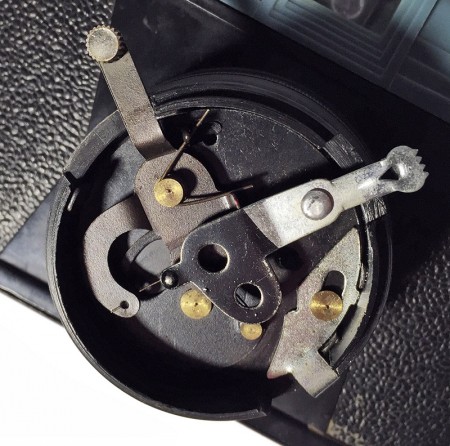
The presence of the “aperture” switch, the number of apertures offered, and the ability to focus were omitted from some clones and variants. Additionally, the locations of some controls changed from one clone to the next.
The plastic used, at least for the Banier variant, feels extremely brittle, and the parts clearly don’t fit together all that well. Reports of poor construction aren’t new, and light leaks are among the most-frequently cited eccentricities of the Diana line. Polymer aging may have taken its toll on original Dianas by now, and could have caused the parts of my Banier to fit together even less well than they did originally, although I noticed no significant light leaks in my test roll.
The whole back and bottom plate come off as a unit to load the camera, released by flipping a small lever on the bottom. The film spools are held in by hinged plastic pins that aren’t sprung and sort of flop in and out. Film is advanced by a knob on the shoulder of the camera.
The original Diana 151 camera was supplemented by the later Diana Deluxe (a more streamlined version) and Diana-F (which had a flash). The original and its variants and clones can be identified by the mark “No. 151 Made in Hong Kong” on the lever to release the back (hence the name).
The Diana was resurrected in 2007 by Lomography as the Diana F+, and their line has since been expanded to include the 35mm Diana Mini variant, and both models are available in myriad color schemes.

How bad is it?
Pretty bad.
At long last, you’ve reached the part of the review where I tell you what I think. To be fair, I warned you up above what was coming down here.
It may be that I’ve played around enough with other crappy plastic cameras, or that I’m kind of over the whole Lomo look in my photos, but I’m just not enamored of this thing. On the plus side, playing with the Banier gave me a whole new level of appreciation for my Holga 120 CFN and my Plastic Filmtastic 120 Debonair

Let’s just go through my notes, shall we?
• Goddamn it feels cheap! The plastic just seems brittle and cheap. It’s crinkly and crackly and the bits just don’t fit together well. I was tempted to tape it up preemptively, but decided not to. Amazingly, it seems like it succeeded at the most basic qualification for being a camera: it kept out all but the desired light.
• Lens keeps falling off. This one probably has more to do with age than anything else. The front part of the lens assembly is no longer securely glued to the rest of the barrel, and while it feels like it snaps on sturdily each time you replace it, it never quite stays put.
• Front chrome trim missing. Probably the same problem here, but a minor disappointment anyway because the chrome trim ring on the front edge of the lens barrel feels like such an important part of the well-known Diana look.
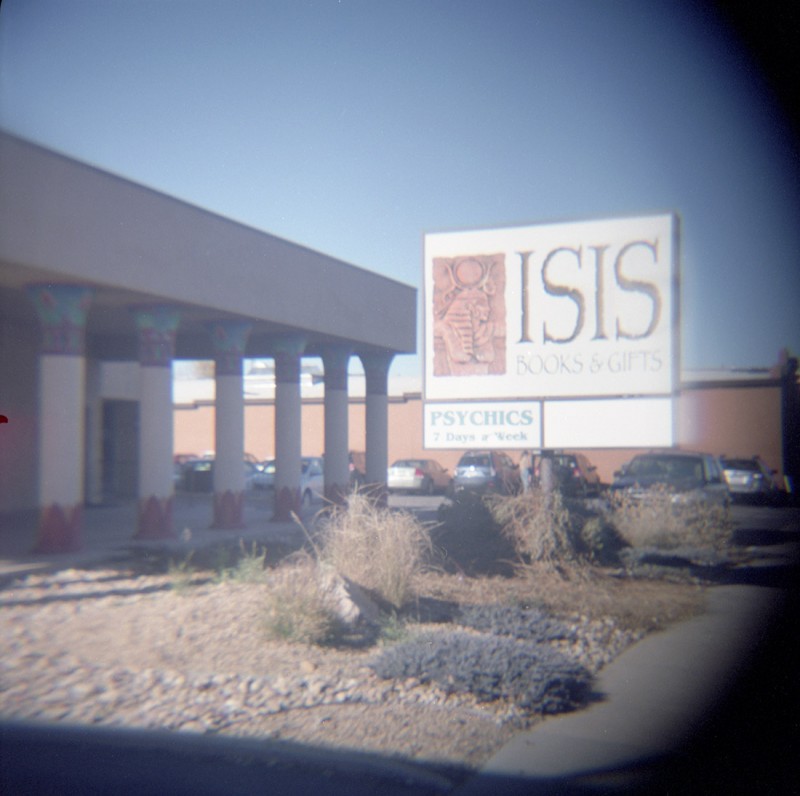
• Scale/zone focus sucks as always. More of a personal thing, it’s true, but scale focusing is a pain when you’re not used to it. Recently I spent some time with the Olympus Trip 35 for #BIFscale16, and using it more consistently did help keep me in the right frame of mind. Of course, it helps when the markings match up with reality, and in this case I’m not convinced they do that very accurately. (I’m actually not convinced it matters where the focus is set at all.)
• “Aperture” won’t stay put. I think a piece is definitely missing, because the “aperture” lever responds to gravity and vibration all too easily. Essentially, the rotation of the earth is enough to move it. It lacks any kind of detents or anything else to hold it at the selected position. It just flops all over. After a few frames, I was actually holding it in place with a finger on my left hand while I framed each remaining exposure.
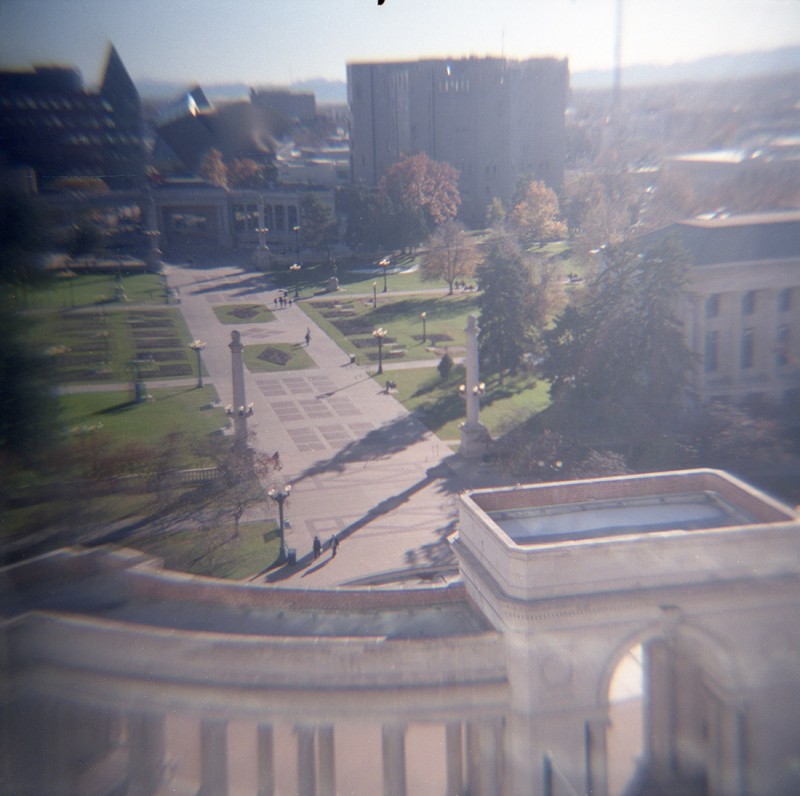
• Appears to take 6×4.5 portrait images like FPP Debonair. This observation was based on the position of the ruby window. I didn’t check the image mask before loading the film — I just wasn’t thinking. Obviously, I learned later that I was totally wrong. According to the original manual, the images are 4.5 centimeters square. They look so lost in that big, wide strip of film. And they just feel like a waste.
Okay, sure, you’re getting 16 frames on a roll instead of the 12 you’d get with a 6×6 camera. And you’re still getting square images. And you’re getting, essentially, 4×4 images without having to buy expensive 127 film (square-format 127 cameras typically give 4×4 images). I still found it really disappointing. Of course, if the Banier tried to take 6×6 images they’d just be even more out-of-focus in the corners, or really heavily vignetted.
• Back doesn’t really fit. The back fits about 80 percent of the way around. I noticed that, depending how I held the camera, the particular 80 percent that appeared well fitted could move around. I probably could’ve introduced all kinds of neat light leaks by taking advantage of this, but even if I had they might not have spread far enough across the film to reach the finished frames beyond the gulf of unused border space around the tiny images.

• Film advance clicks loudly. It’s like the Holga, only louder. And it feels a little less even. It’s about as stealthy as rolling a metal trashcan down the road in front of you.
• Film advance is difficult to turn — hurts my hands. While the Holga has a little foam pad to hold the film and backing paper tightly against the take-up spool, the Banier doesn’t have anything. I was at a loss to explain why the film advance seemed to be getting tighter and more difficult to turn the further I got through the roll.
In hindsight (because it’s 20-20) I probably should’ve realized what was going on, but I didn’t. I found out when I opened the camera after the first roll that the Banier winds the film very loosely. So loosely that after a few frames the film had wound around the edge of the top end of the spool rather than around the spool itself.
Normally I would expect that to have fogged the edges of the film in far enough to affect the edges of the frames, but it was almost fortunate that the images are so small that the fogging couldn’t get anywhere near them. I also, luckily and by sheer chance, opened the camera in a dim room. As soon as I realized what I was dealing with, I ducked into the closet for near-total darkness to remove the film and wind it tightly onto the center of the spool so I could take it in for processing.
I’ve found forum posts indicating I’m far from the first to experience this, and others also report that the wide edge space seems to help prevent fogging from damaging the images.
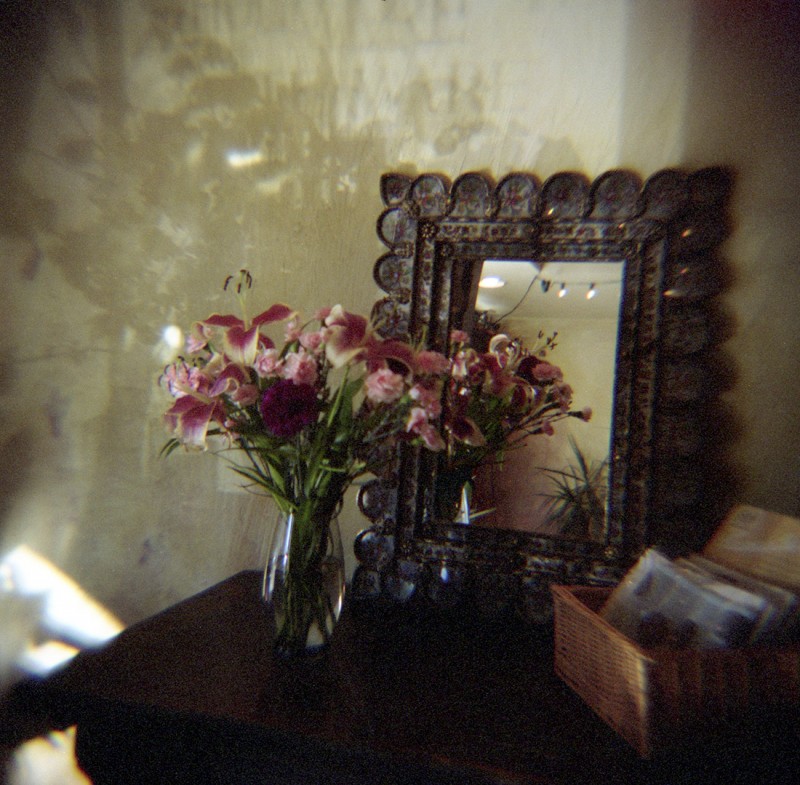
• Lost the lens at the tea shop. I found it again after it rolled away. This just served to reinforce my frustration with the self-disassembling nature of this particular camera.
• Viewfinder big and bright, if foggy. The viewfinder isn’t exactly clear, but it lets plenty of light through. It’s big enough that it seems like it’s making it really easy to frame your images.
• Viewfinder doesn’t really work. Found this out after getting the film back. It’s basically a miracle that anything I pointed the camera at wound up in the actual frame. It didn’t even seem consistent — sometimes the left edge of what I thought I shot was gone, other times the right.
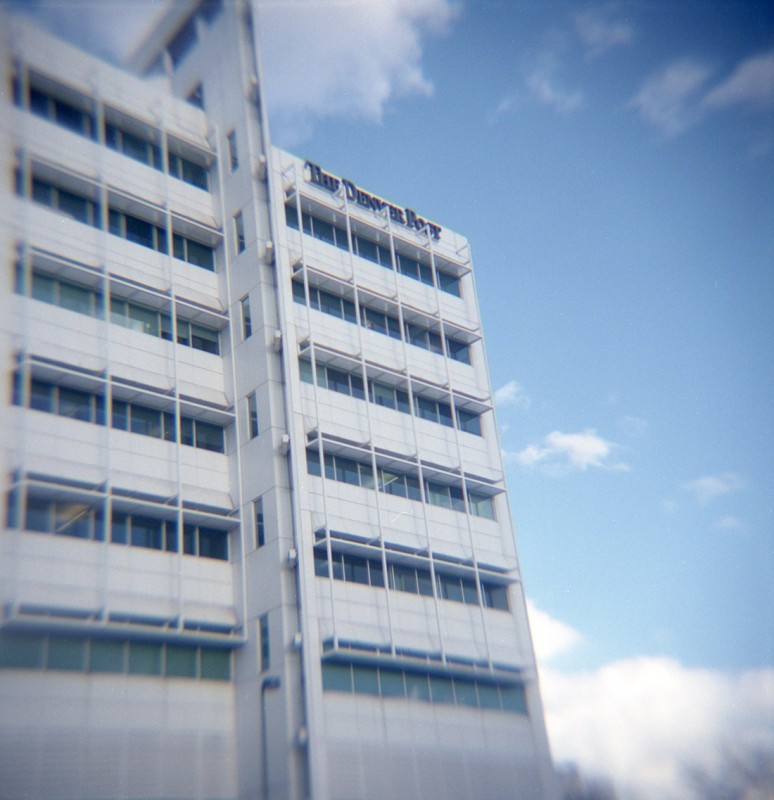
Thinking about it, this could have to do with the constantly-escaping lens. Every time I put it back on, it might have woudnd up at a slightly different angle, affecting the image on the film like the front-standard movements of a field camera. Also possible: The lens or its threads may not be quite straight in the focusing setup, meaning that turning the lens to “focus” might change the angle of the lens and therefore the placement of the image circle on the film.
Either way, I don’t feel like the viewfinder is terribly useful. The Banier just sort of … takes pictures of whatever it feels like.
That’s it for my notes.
In examining the images, you can see the lens is about the worst I’ve ever tested. It shows extreme pincushion distortion and isn’t really sharp even in the center. The chromatic aberration is so bad it creates full-on ghosts of some things. A box Brownie with whipped cream on the lens could just about do the same. Or better.
The extreme out-of-focus edges (which is basically the 90% of the frame that isn’t the center) definitely qualify for the so-called “dreamy” look, but it’s so extreme it goes beyond desirable and lands closer to useless. A couple of these test images actually make me a little queasy because the sense of motion is so prevalent.

I used a roll of slightly-expired Fujifilm Pro 400H for my test shots because it was the only ASA 400 color negative 120 film I had. I probably could’ve used some Kodak Ektar 100 instead because some of the bright-daylight shots are a bit over-exposed.
After the disaster with the way the film wound onto the take-up spool on that first roll, I decided I didn’t care to risk another roll of film. I didn’t enjoy shooting the Banier enough to want to put more film through it, anyway.
At this point I know far more about the Diana/Banier and its variants and clones than I ever thought possible. And I don’t feel any better-off for it. As I said above, this one is truly for the hardcore lomographers and collectors. If you feel tempted to buy one — I’d recommend spending the money on something more useful and desirable, like thrift-store underwear.
Want a cheap Banier? Let me know.
